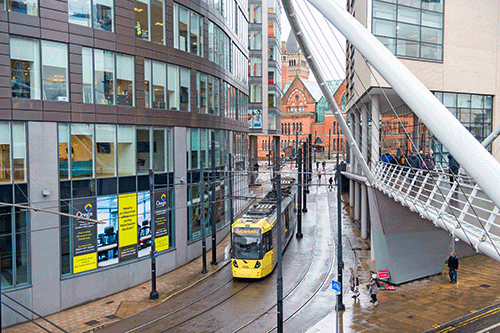 Read the peer reviews for this article
Read the peer reviews for this article
Apparently, the future might already be the past - or at least that version of the future where we revel in a transport utopia.
Writing a briefing paper in 2012, Louise Butcher, a transport policy specialist at the House of Commons, began bluntly: “The heyday of light rail in the UK was in the 1980s/1990s when systems were planned for dozens of areas across the country. For one reason or another most of these failed to materialise.”
There was a time around the turn of the century when it seemed no self-respecting UK city was without an artist’s impression of a tram gliding through streets. By now they were expected to be an everyday reality in Liverpool, South Hampshire and Leeds. But around 2004, one after another, they fell by the wayside, usually after years of development. In the case of Leeds, £40 million had been spent on consultants and land purchase by the time Government pulled the plug, citing rising costs.
However, systems have opened in Nottingham and Edinburgh. Broadly speaking passenger numbers have been strong, although both projects ran behind their initial schedule. Again, more headlines were generated in the Scottish capital by the costs - despite the line being truncated, an original cost estimate of £375m had risen to more than £500m by the time the contracts were signed, and ultimately to £776m when the project was completed. An inquiry into what happened is likely to consider millions of documents.
Elaine Greenwood is the head of sales for rail consultant ESG. Before that, she was responsible for hundreds of millions of pounds of light rail contracts at Bombardier Transportation. When we meet for a coffee, her passion for the topic is obvious - her cup goes almost untouched as we discuss the view from her front row seat, watching the rise (and apparent stall) of the UK’s flirtation with trams. I’d expected costs to be the first thing we discussed, but it is another ‘c’ word on her mind… culture.
“There is a serious lack of understanding and knowledge of light rail in the UK. What generally happens is even though people ask for consultants to help, they end up with a heavy rail consultant, trying to apply the principles of heavy rail to light rail. Until people realise there is a real fundamental difference, then it’s a problem.
“If you are building a brand new network, put the vehicle to one side - that’s the easy bit generally. The difficult bit is having the rails in the ground, because in a city centre they are going to run over utilities. The companies come forward and say ‘you can’t build there because of our equipment’. It’s just a way of getting new equipment on the expense of someone else, so all of those costs get attributed to the light rail network.
“You need a complicated act of Parliament where anyone who owns any piece of land on your route, you have to contact. It’s not about the interruption to your life, it’s about you having the right to say ‘I don’t want it to run there’. And people will say that - not because they mean it, but because they think they can get some money. The Transport & Works Act Order is a complicated and expensive process... it’s all part of the whole cost of the project. ‘It’s too expensive’ is what you always get. It’s not. It’s the way it is done.”
Our conversation is peppered with examples where Greenwood believes mistakes were made, but not shared with others as a learning process: “There’s embarrassment, or it is disguised as confidential information.”
For example, a terminus on one city system has ended up isolated after the tower blocks it was designed to serve were demolished before it opened.
“During the build, no one had told them those flats were going to be demolished,” she says.
Another city planned to use bespoke vehicles because a more standard-sized solution wouldn’t fit around one proposed corner.
“So, change the bloody corner! Move it somewhere else. All that does is cause the whole project to rise in cost.”
But Greenwood also has praise for London’s Docklands system and for Manchester, which save money and take the responsibility for integration between track, equipment and vehicles, managing extension projects themselves and cutting any risk premium that a financier might attach. So, does she believe light rail still has potential in the UK?
“I don’t think light rail is the answer to everything. There are places where it shouldn’t be promoted, but where there should be - from an economic point of view, from a transportation point of view - it appalls me that there isn’t one. Leeds is a fine example.”
Following the withdrawal of funding for Leeds’ Supertram project, officials were asked to draw up a trolleybus scheme. But Greenwood’s assertion that people who might use a tram would never use a bus has turned out to be prescient - as this issue of RailReview was going to press, the Leeds Trolleybus scheme was cancelled. The city has now spent around £65m over the best part of two decades, with nothing to show for it. It is apparently the largest European city without a transit system.
Looking abroad, major cities seem able to commission and build light rail much more quickly. In France, some two dozen networks are now open. In Lyon, from two lines opening in 2001 there are now five routes plus an express line to the airport. This is in a city that also boasts a metro.











